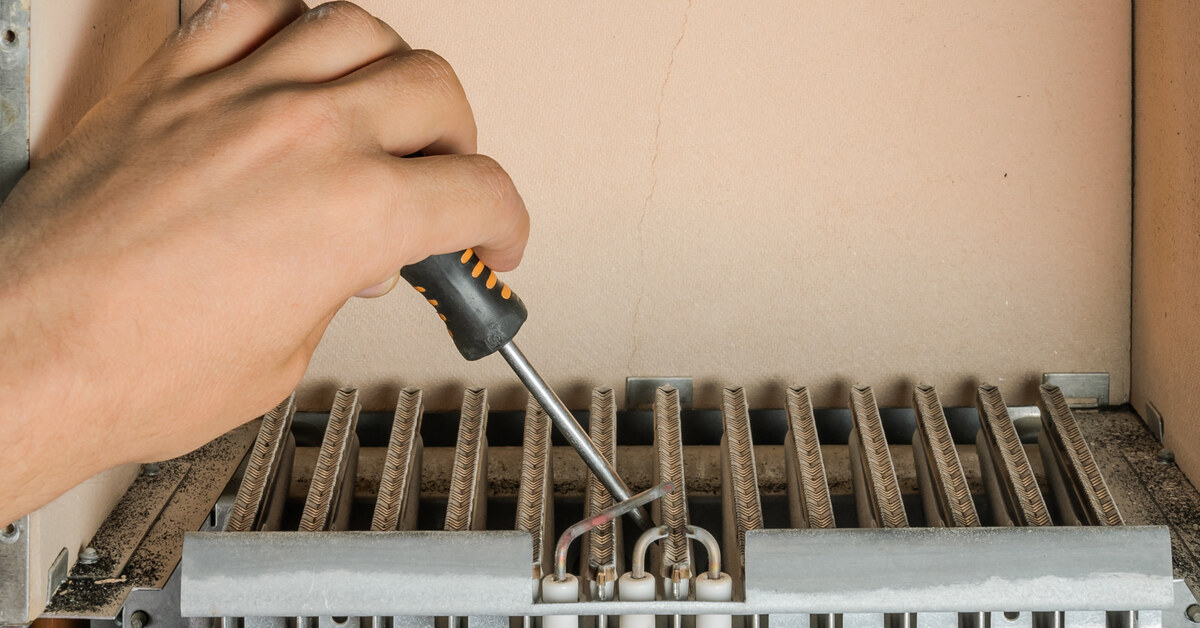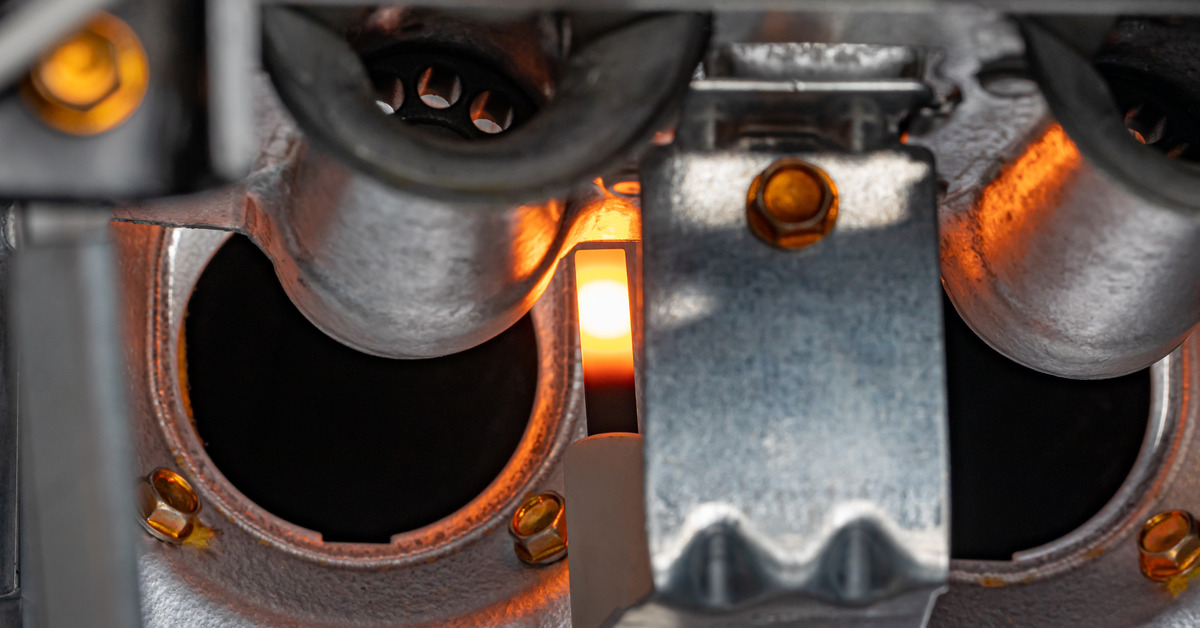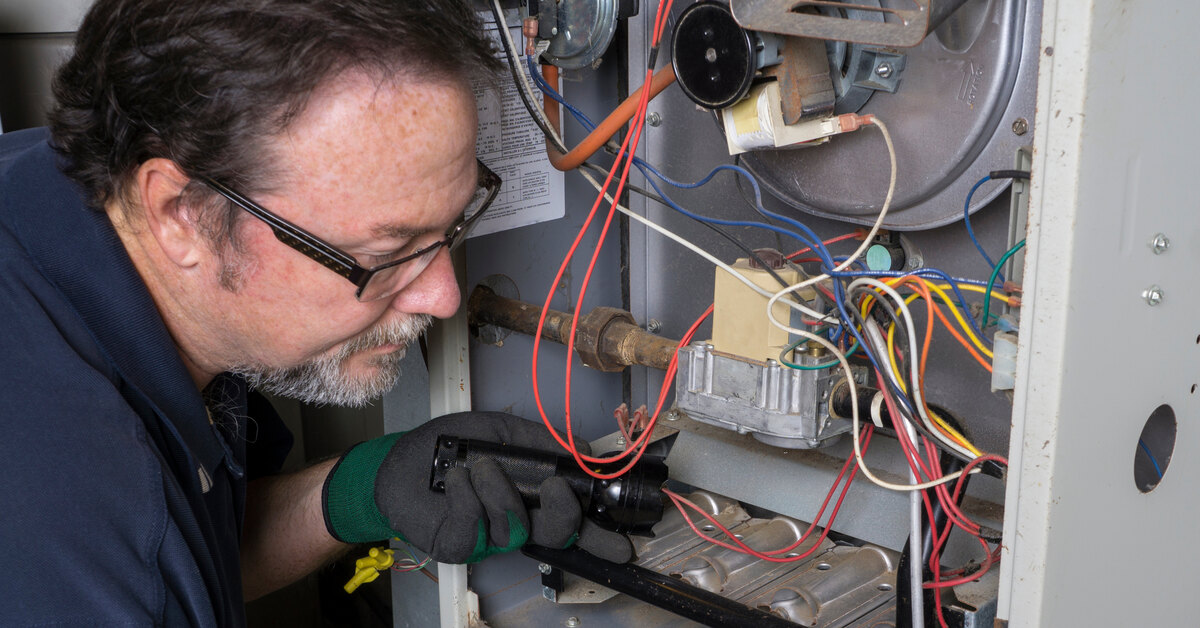- 24/7 Emergency HVAC Repair
- Financing Available
- We Accept All Major Credit Cards
What Is Furnace Short Cycling, and How Can You Fix It?

A furnace that keeps turning on and off in short bursts might feel like a minor annoyance, but it’s a signal that something is wrong. This phenomenon, known as short cycling, affects your furnace’s performance, reducing your home’s comfort and energy efficiency.
If left unaddressed, short cycling could lead to more serious—and costly—issues. Use this guide to understand what furnace short cycling is and how you can fix it to maintain a cozy and energy-efficient home.
What Is Short Cycling?
Short cycling in a furnace occurs when the system turns on and off in rapid or frequent cycles without completing a full heating session. This typically happens when the furnace overheats and shuts down prematurely to protect itself or when there is an issue with the thermostat or airflow. Irregular operation prevents the furnace from heating your home effectively and leads to unnecessary wear and tear and eventual repairs.

How Does a Furnace Function?
To understand short cycling, it’s helpful to first know how a furnace typically operates. When your thermostat detects that the indoor temperature has dropped below the set point, it signals the furnace to ignite and warm the air.
The heating cycle continues until the home reaches the desired temperature, after which the furnace turns off. This process repeats as necessary, with each cycle lasting from 10 to 15 minutes under normal conditions. A properly functioning furnace ensures consistent, even heat without frequent interruptions.
Recognizing the Signs of Short Cycling
Short cycling is characterized by the furnace turning on and off much more frequently than it should. You might notice your furnace running for just a few minutes at a time before shutting down, only to start back up again a short while later.
Irregular cycling often results in inconsistent room temperatures, with some areas feeling too warm while others remain cool. It also makes your home feel less comfortable overall, as the constant stopping and starting prevents your furnace from maintaining a stable environment.
The Impact of Short-Cycling on Your Home
Short cycling impacts more than your home’s temperature. It affects your finances and how much you spend on heating. Since the furnace is constantly powering on and off, it uses more energy, causing your utility bills to rise. You’re essentially paying for heat that your system cannot deliver efficiently. Worse yet, short cycling creates uneven heating, leaving certain rooms or zones underheated. These inefficiencies make your home feel less inviting during the colder months and wastes energy.
How Short Cycling Affects Your Furnace System
The effects of short cycling place undue strain on your furnace components, accelerating wear and tear. Systems that cycle too often are more prone to breakdowns and may require frequent repairs. These breakdowns are detrimental to safety and comfort in places like Philadelphia, where freezing temperatures threaten homes with poor heat regulation.
Over time, short cycling also shortens the overall lifespan of your furnace, forcing you to replace it sooner than expected. A furnace is a significant investment, and resolving short cycling issues protects that investment.
What Causes Furnace Short-Cycling?
Short cycling occurs for a variety of reasons, and identifying the root cause is essential to find a solution. While some causes may be simple to address on your own, others may require professional assistance. The following sections will break down common culprits of furnace short cycling.
Dirty Air Filters
A common yet often overlooked reason for short cycling is dirty air filters. When dust and debris clog the filters, they restrict airflow to the furnace. Limited airflow causes the system to overheat, triggering safety mechanisms that shut the furnace off prematurely. Replacing or cleaning your air filters regularly is a reliable method of preventing this issue and ensuring consistent airflow through your system.
Thermostat Issues
The thermostat plays a critical role in regulating your furnace. If it’s malfunctioning or placed in an area where temperatures fluctuate rapidly, such as near windows, doors, or vents, it may send mixed signals to your furnace. This may lead to frequent cycling as the system tries to respond to inaccurate temperature readings. Ensure that your thermostat is calibrated and properly positioned to resolve this problem.
Oversized Furnace
While it might seem like a larger furnace would offer better heating, an oversized unit may actually exacerbate short cycling. A furnace that’s too powerful for your home warms the air so quickly that it reaches the target temperature almost immediately, leading to frequent shutoffs and restarts. Inefficient operation increases energy use and accelerates wear on the system. Proper system sizing is crucial to avoid these issues.
Blocked Vents or Ductwork
Obstructions in your home’s HVAC system, such as blocked vents or collapsed ductwork, impede the flow of air. When this happens, your furnace struggles to distribute heat effectively, leading to overheating and short cycling. Ensuring that vents are clear and ducts are in good condition can restore proper airflow and help your system run efficiently.

When To Call a Professional
While some issues are manageable on your own, others require the expertise of a professional HVAC technician. Persistent short cycling, unusual noises, or failure to heat your home effectively are indicators that your furnace needs a thorough inspection. Professionals have the tools and knowledge to identify problems like oversized systems or damaged components beyond the scope of DIY fixes.
Scheduling regular maintenance prevents short cycling from occurring in the first place. Contact W.F. Smith for maintenance and recommendations for the best ways to resolve the issue. We also offer expert furnace installation services to replace your furnace if necessary.
Preventing Furnace Short Cycling
Preventing short cycling starts with regular care and attention. Scheduling annual furnace inspections allows professionals to catch potential issues early, while tasks like changing air filters every few months ensure proper airflow.
Investing in a well-sized furnace and maintaining clear ducts and vents are other steps that go a long way in preserving your system’s efficiency. These preventative measures protect your furnace and improve its overall performance.
Fixing short cycling has a profound impact on your home and your heating costs. With a properly functioning furnace, you’ll notice improved energy efficiency, leading to lower utility bills. You’ll also enjoy more consistent comfort, with even temperatures throughout your home. These long-term benefits make the effort to resolve short cycling well worth it.
Furnace short cycling is more than a minor inconvenience—it’s a serious issue that affects your home and its heating system. Understanding what short-cycling is and how to fix it ensures your furnace operates at its best. Whether it’s replacing a dirty filter, recalibrating your thermostat, or consulting a professional, every action you take brings you closer to a warmer, more efficient home.

I’ve been dealing with WF Smith for many years and have found them to be consistently reliable, professional, responsive and courteous. I recommend them without hesitation. I have recently replaced my builders’ grade HVAC (not initially installed by WF Smith) with Lennox products and, though the Lennox products are new on this house, I had Lennox products on my last home in Long Valley, NJ which I had built and was very pleased with their performance there. So, I have every expectation that I will be able to rely upon the product’s performance and manufacturer’s warranties, as well as upon the workmanship that characterizes the installation.

